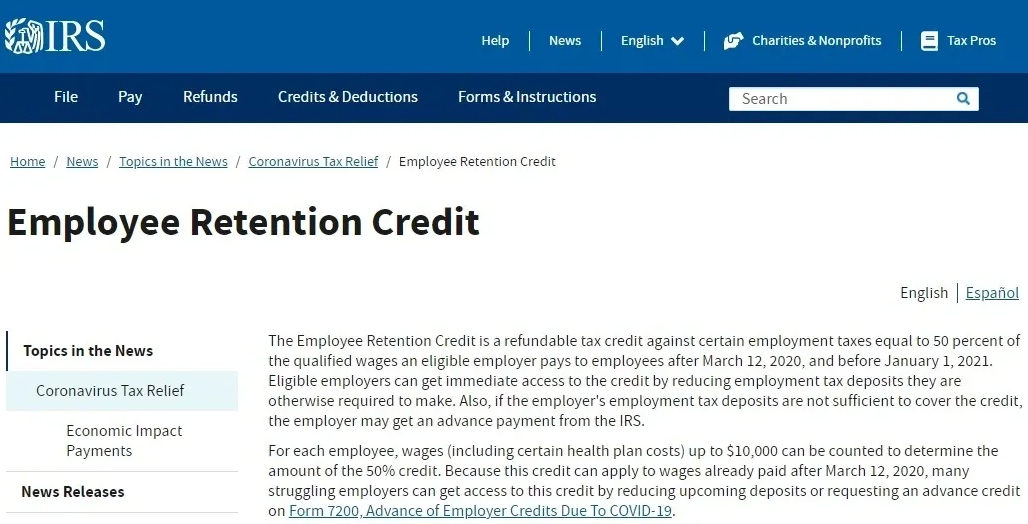The 20-Second Trick For Making Sense of the Employee Retention Tax Credit


Act Now: Apply for the New Employee Retention Credit by June 30, 2021
Unknown Facts About ERTC Tips - Spidell
"Although the program is set to sunset at the end of 2021, the credit can be declared on modified payroll income tax return as long as the statute of constraints remains open, which is three years from the date of filing," said Brent Johnson, co-founder and CEO of Clarus R+D, a maker of software for claiming tax credits.
9-12 in Las Vegas and virtually.] ERTC Basics, The ERTC, likewise referred to as the Staff Member Retention Credit (ERC), was developed by the Coronavirus Help, Relief and Economic Security (CARES) Act, signed into law in March 2020, to encourage organizations to keep staff members on their payroll. The Consolidated Appropriations Act, 2021 (CAA), enacted in December 2020, and the American Rescue Strategy Act (ARPA), enacted in March 2021, modified and extended the credit and the schedule of certain advance payments of the credits through completion of 2021.

The credit applies to incomes paid or sustained from March 13, 2020 through Dec. 31, 2021. The expense of employer-paid health benefits can be considered part of employees' certified wages. View Details , There is no size limit on eligibility for the ERTC. Nevertheless, small and large businesses are dealt with in a different way, Fried kept in mind: all employee salaries receive the credit, whether the employer is open for service or subject to a shutdown order.

ERTC - World Refining Association
Qualified companies are private-sector businesses and tax-exempt companies that experienced: as an outcome of a federal government order limiting commerce due to COVID-19 during 2020 or 2021. throughout a 2020 or 2021 calendar quarter, when compared to the same quarter in the previous year. that was launched after Feb. 15, 2020, for which the typical yearly gross receipts do not exceed $1 million, based on a quarterly ERTC cap of $50,000.
Congress presses IRS on ERTC processing and tax penalty - The Facts
For 2021, a business should have experienced more than 20 percent decline in gross invoices, compared to the exact same quarterly period of 2019. New businesses not in presence during a particular quarter in 2019 are allowed to replace the corresponding quarter of 2020 for the comparison."If your service experienced a considerable decline in gross receipts but has actually because recuperated and you didn't declare the credit, you can return and declare it now," Johnson said.
